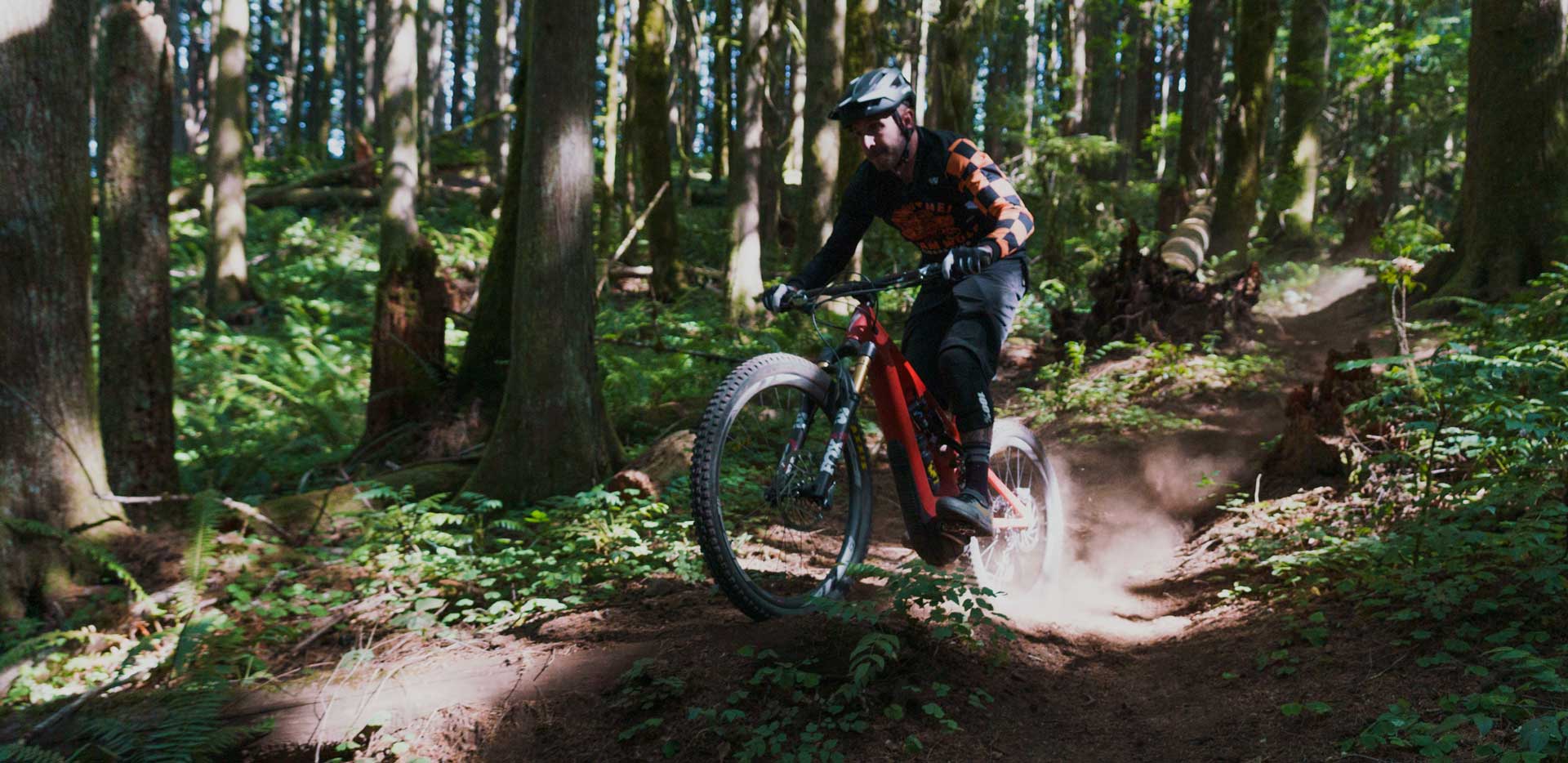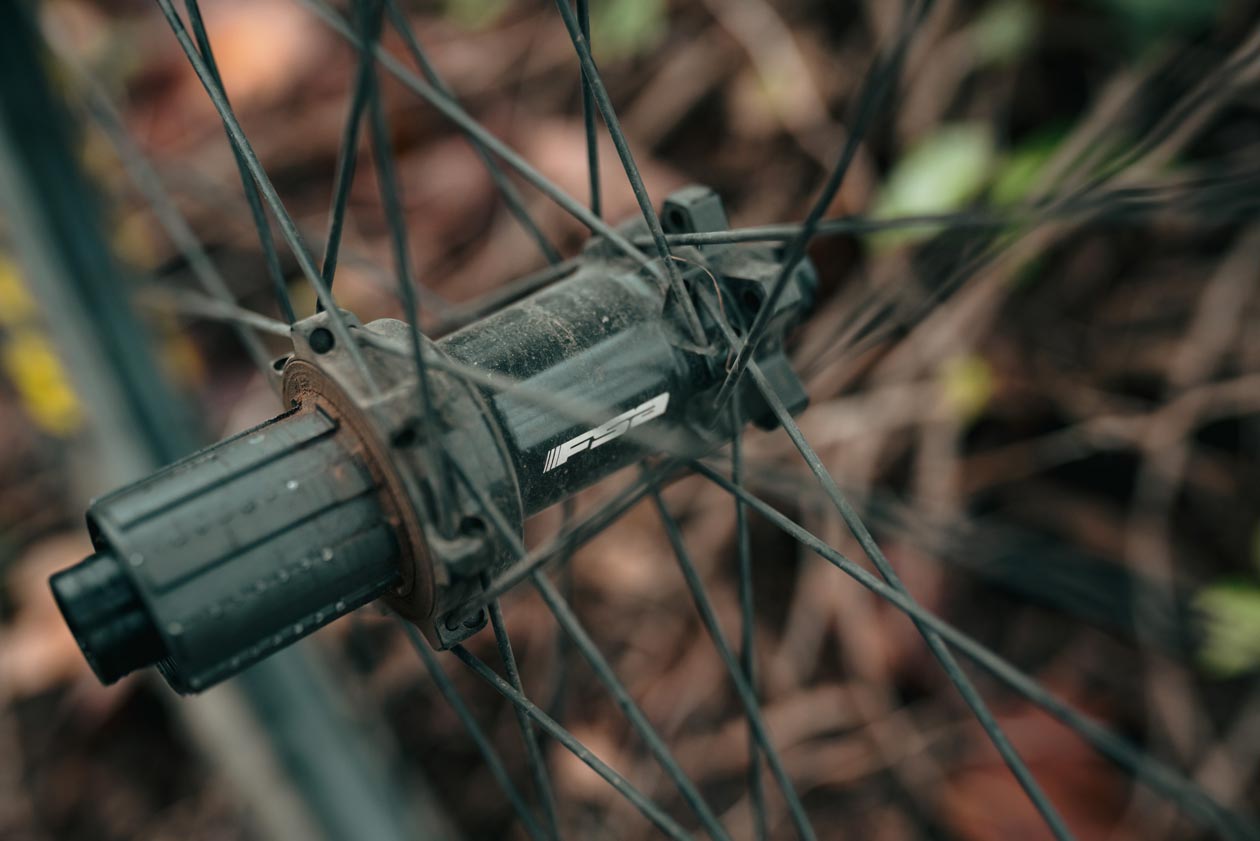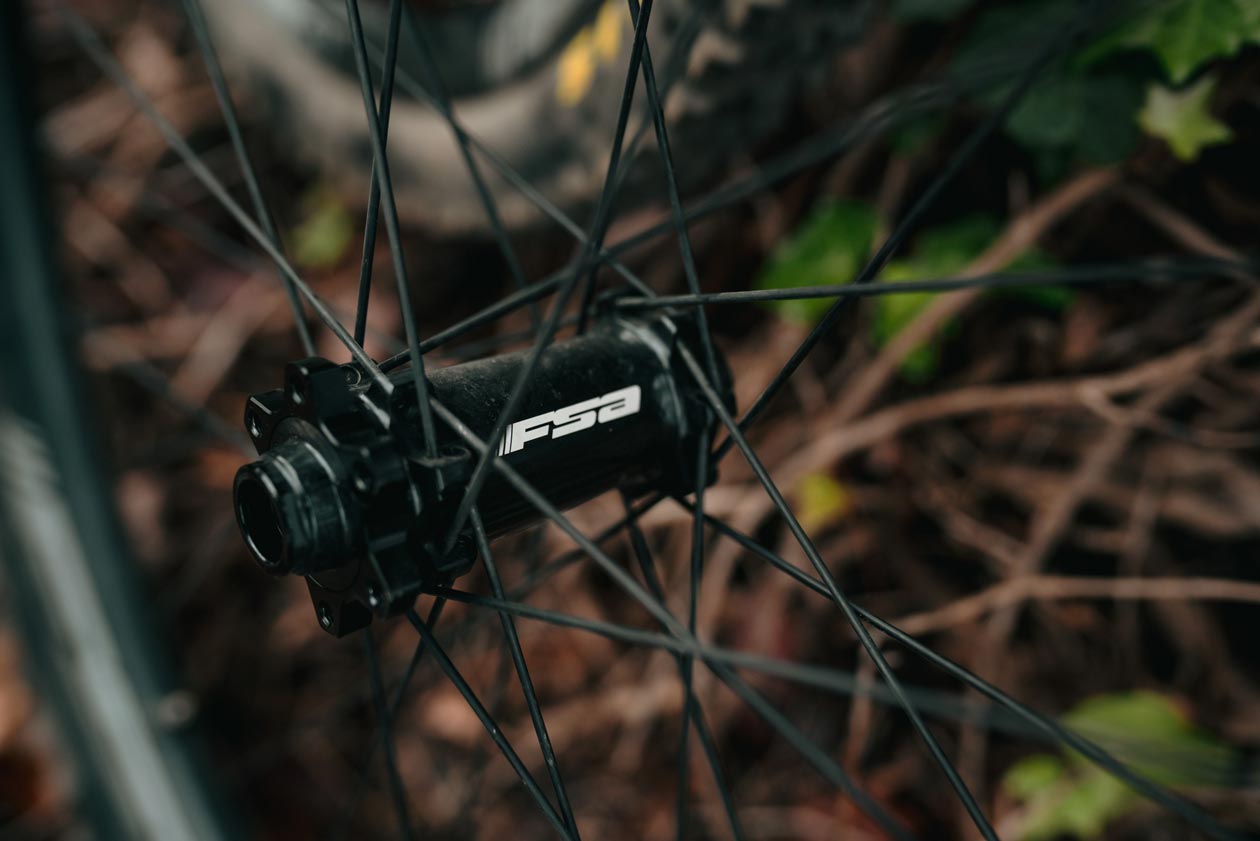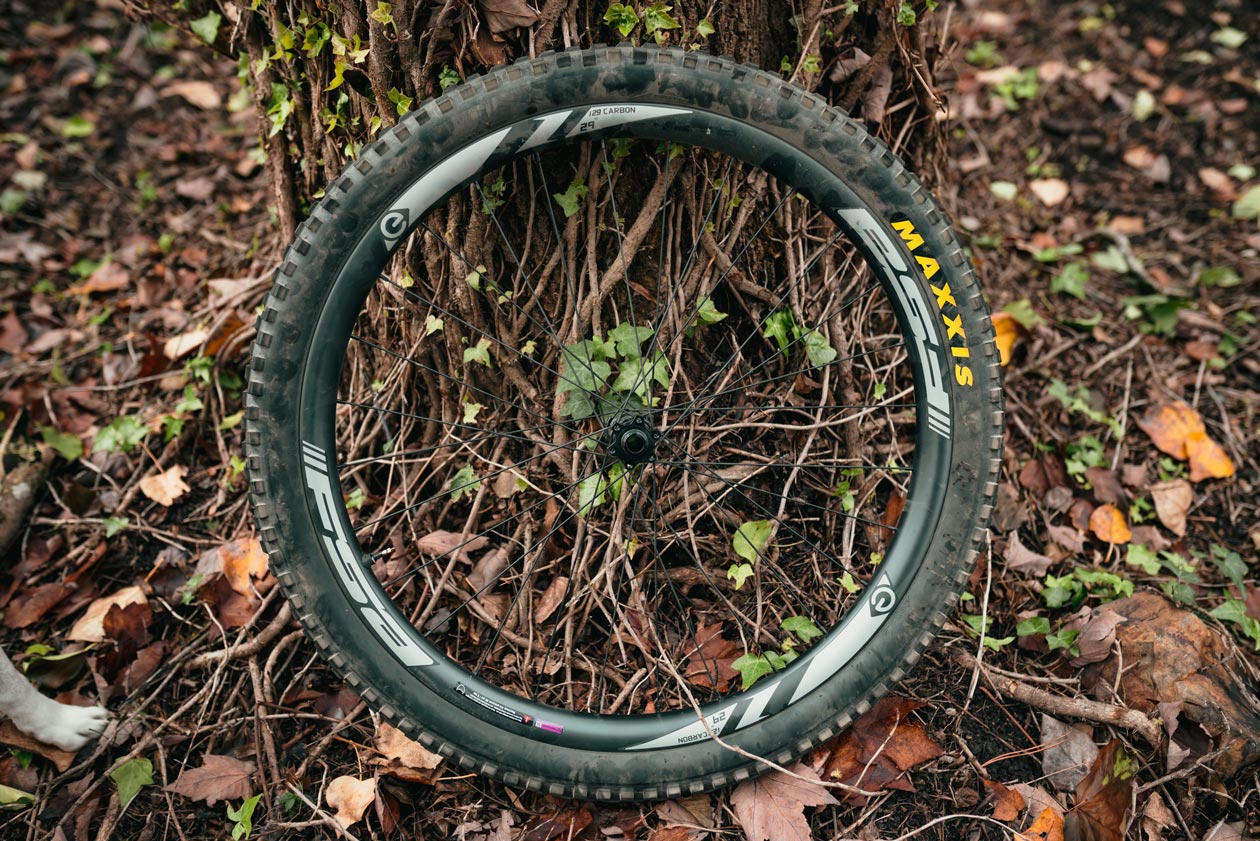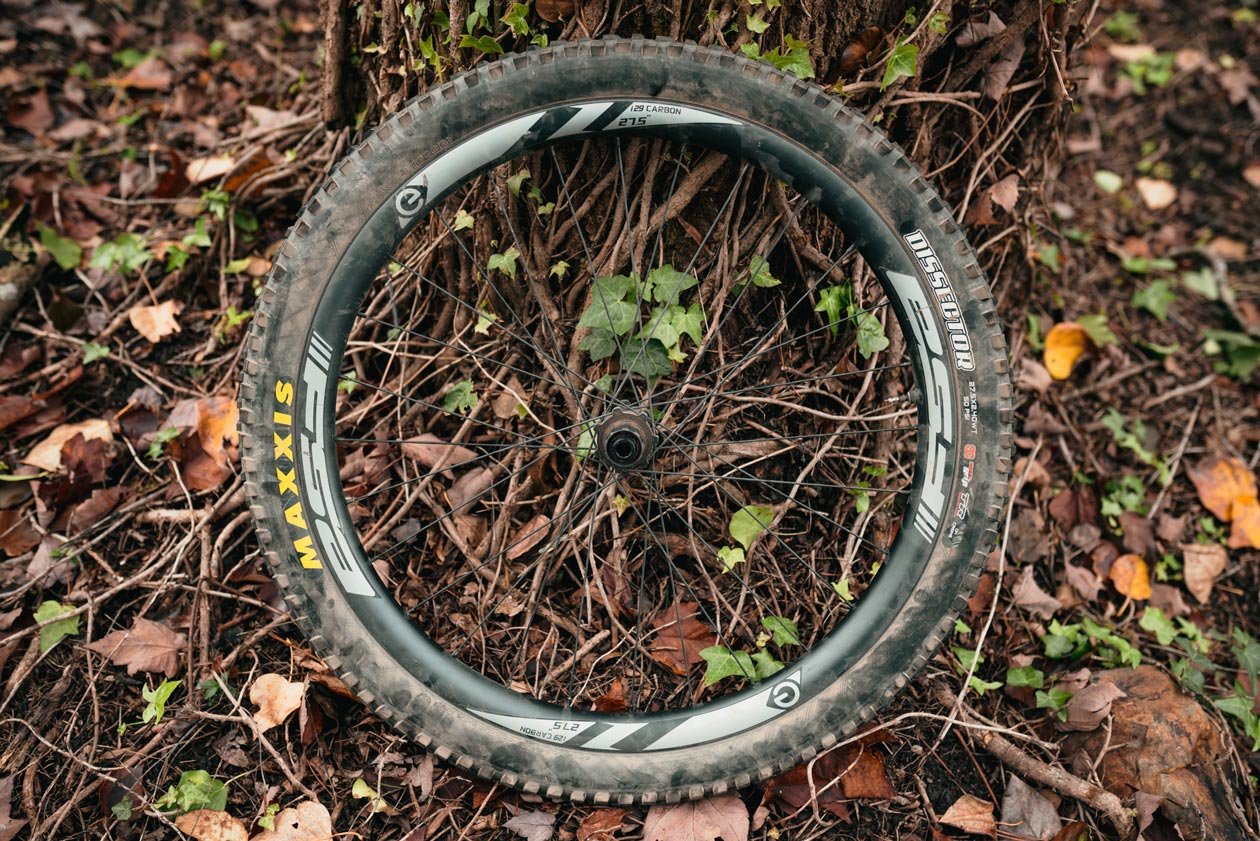
FSA EMTB CARBON i29 WHEELS
Words by Drew Rohde | Photos by Dusten Ryen
Video by Brian Niles/Treeline Cinematics
SPONSORED CONTENT
The amount of punishment given to eMTB wheels seems to be an order of magnitude higher than a standard mountain bike, with the extra weight of the system, more frequent riding, extra mileage traveled and typically, faster riding, eMTB components are asked to handle quite a bit more than their average mountain bike counterparts. As with all evolutionary phases, as we learn, we have realized there are very different needs from eBike components, and brands like FSA are reacting quickly. Today we’re going to be Dissecting the FSA eMTB Carbon i29 wheels and letting you know just what they’re about and what makes them ready to handle eBike abuse.
As with all of our Dissected Features, this is not intended to be a long term review or endorsement of a product but is instead a chance for our viewers and readers to get a deep dive look into some of the newest tech and products in the mountain bike space. We thank FSA for the opportunity to create this feature and getting you some valuable beta on these new eMTB wheels.
TECH
Complete wheel system overview
FSA’s eMTB Carbon i29 wheelset is purpose built from the ground-up to handle the rigors of eMTB hammering. These carbon eBike wheels meet all e-standards and give prospective users peace of mind that they’re up to the task and will last a very long time. The hand-built wheelset was tailored to produce a stiff and durable wheel. Taking what they’d already learned in the development of their heavy-hitting Gradient wheelset, FSA looked to add the e-specific strengths to the hub components and add further fatigue strength by slightly upping the number of spokes. The result is a sub-1900g wheelset available in 29” or 27.5” that carries a 2-year warranty and is rated for system (rider, bike and gear) weights of up to 330lbs (150kg). These come in at a combined retail price of $1,682, undercutting some “Premium” level wheelsets by a notable margin.
Hubs
The hubs are FSA’s own alloy models featuring their PRA bearing preload adjustment, which helps to keep the easily sourced 6903 bearings spinning as smooth as possible. To handle the extra torque of eMTB’s, the pawls, freehub and rear hub axle are steel which should ensure they withstand the abuse. This is a move not all eBike wheels have made and is one we’ll likely see in the future as the increased strength and durability of steel, is very real. They feature 28 direct (straight) pull spoke holes; 6 pawls in the rear hub for durability; ISO 6-bolt brake mounting; and use the Boost axle standard on both ends. Freehub options are provided for typical 9-11speed cassettes as well as Shimano Microspline and Sram XD. Overall, the goal with FSA’s eBike hubs, and wheels in whole, is to create a durable and reliable system.
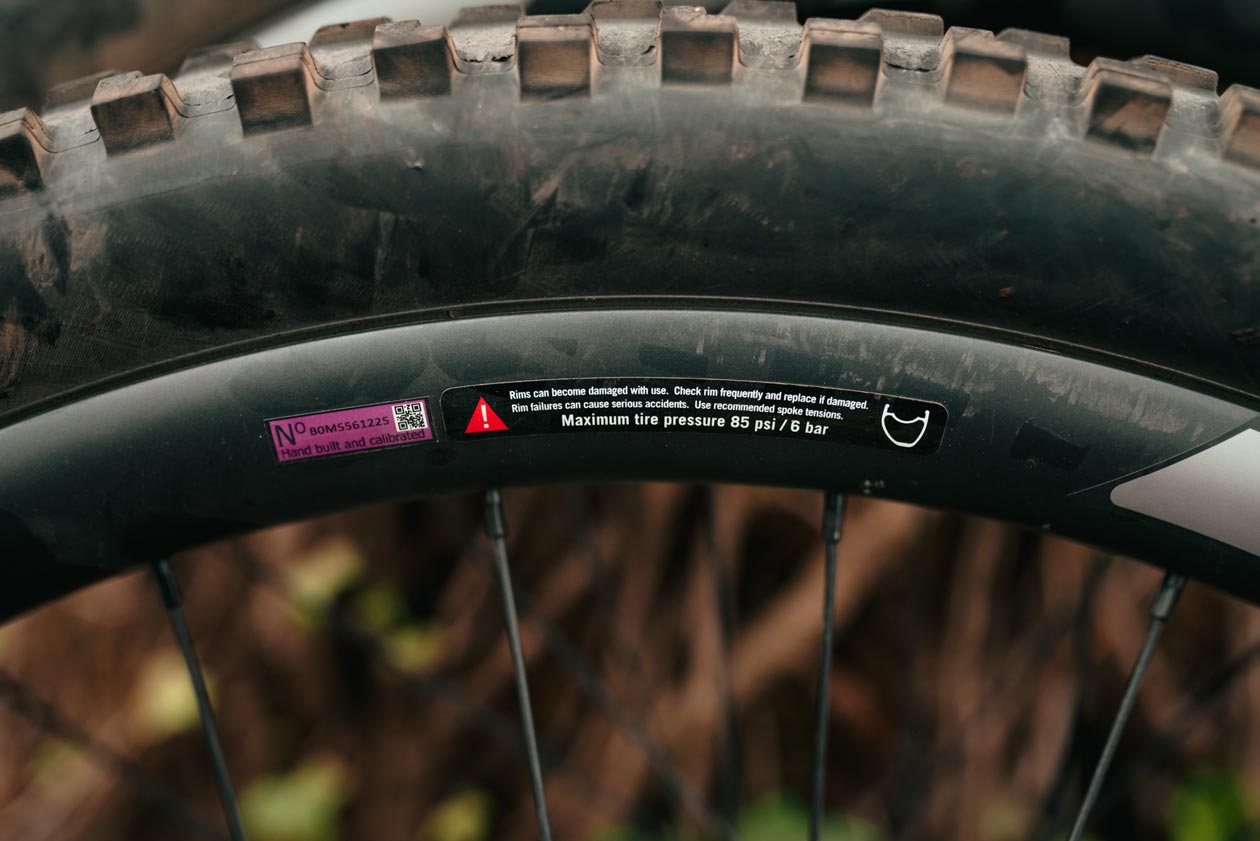
Rims
The eMTB Carbon i29 rims are identical to their Gradient downhill rim, except they are drilled for 28 spokes over the 24 spokes of the DH wheelset. Once again, this further strengthens the wheelset through a lifetime of eBike abuse. The eMTB Carbon rim features FSA’s signature 4mm offset for the spokes, helping to equalize the spoke length and required tension to produce an overall more balanced and therefore stronger wheelset, without adding extra material.
In addition to the spoke hole asymmetry, the overall shape of the rim is also tailored to add stiffness to the side that experiences the greatest forces – the drive side for the rear wheel, and the braking side for the front wheel. This involved shaping the rim to offer more stiffness to the higher-stressed side with a shape they call WideR. This reduces the number of spokes required and provides a more weight-efficient method of producing the desired ride characteristics.
These rims come in at 30mm deep, which retains a slight touch of compliance to keep the ride from being overly harsh for lighter riders, but they’re definitely on the stiffer side. A 29mm internal width should suit the majority of eBike tires nicely. We’d say the width range will be 2.4-inch to 2.8-inch however 2.5” 2.5” WT and 2.6” will likely be the absolute best, and our favorite. The hookless bead measures 3mm to give an overall rim outer width of 35mm. The rim decals are replaceable and are offered in a range of colors to allow for customization of their look to match your ride.
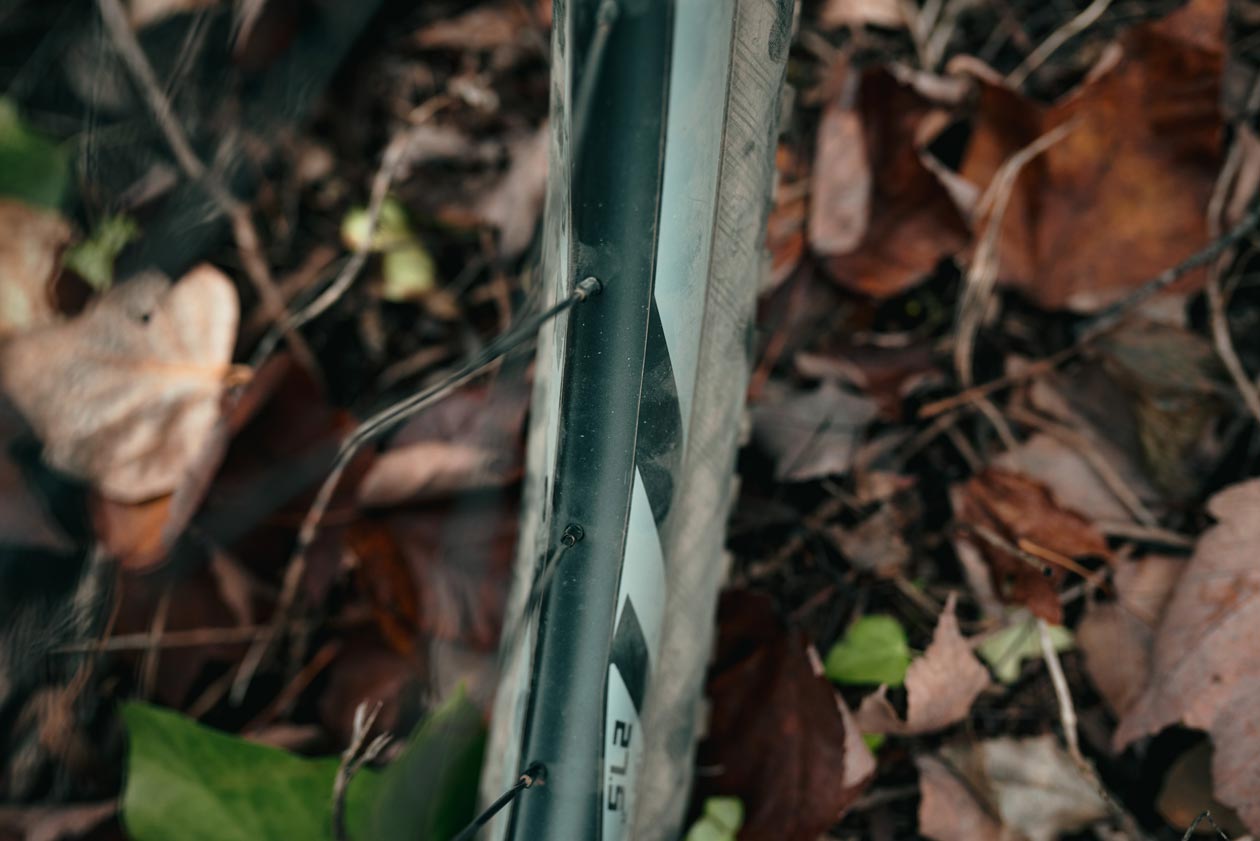
Spokes
The final piece of the puzzle in the FSA eMTB Carbon i29 wheelset are the 28 direct pull spokes. Designed to blend durability without using hard-to-source proprietary items, FSA uses standard 14g spokes all round. While 28 spokes may not sound like a satisfactory amount to handle life on an eMTB, the rim bed profile on the Gradient-derived rims mean they were able to use less spokes to maintain the stiffness and strength desired, losing weight and adding ride compliance in the process. We asked why not 32-spokes in our video interview, and were given the answer, so be sure to give that a watch for more detail.
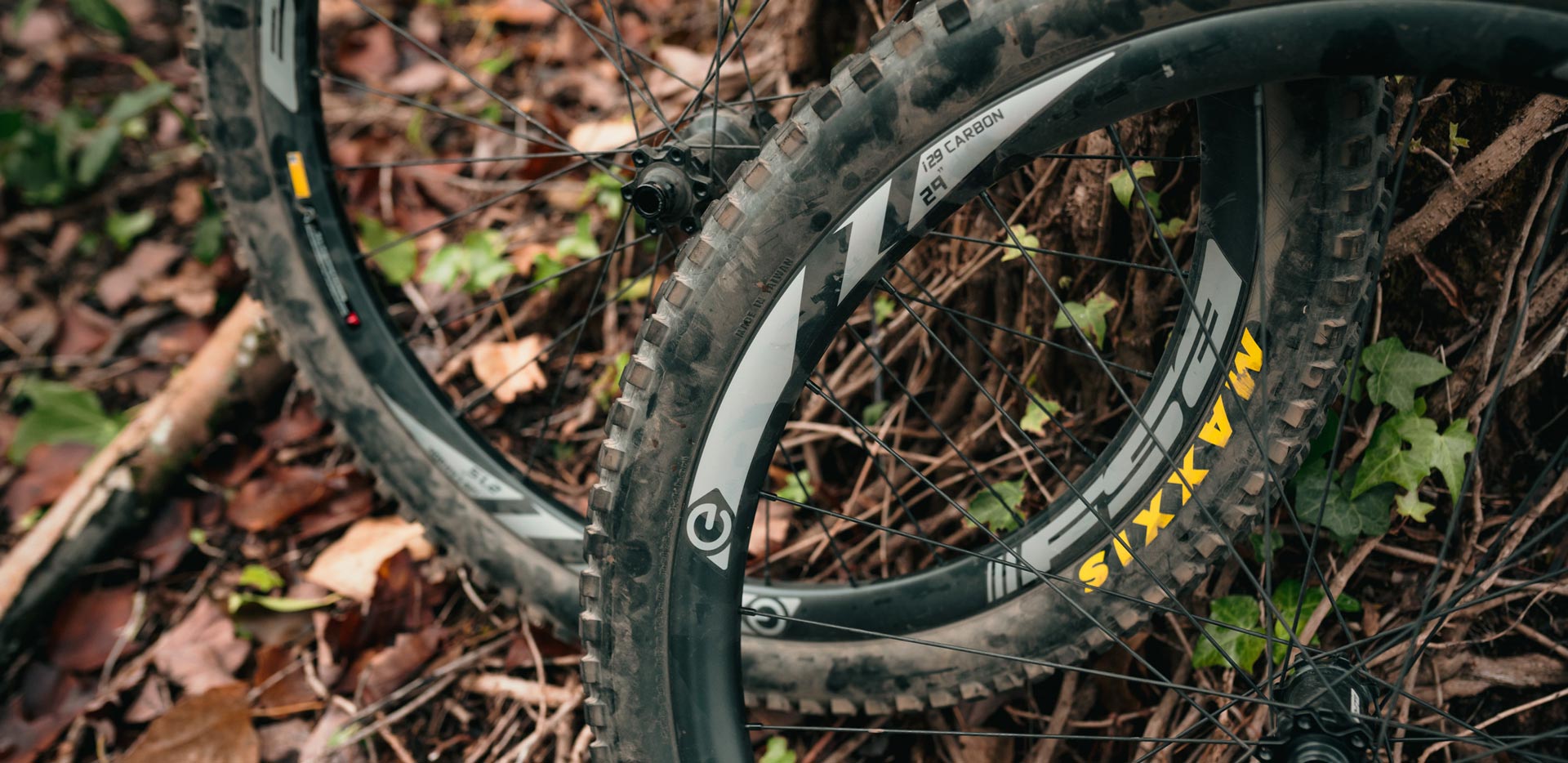
INTERVIEW WITH FSA’S MTB PRODUCT MANAGER, PATRICK ZUEST
HOW LONG HAS FSA BEEN IN THE MTB WHEEL GAME?
FSA started manufacturing MTB Wheels in 2014 with the original WideR MTB wheel, which featured the same 4mm asymmetrical offset we still use today. We’ve been developing and testing MTB wheels for nearly a decade at this point.
HOW MANY MODELS OF MTB WHEELS DOES FSA HAVE?
FSA has seven models of wheels available from Enduro to XC / Trail and eMTB. Two things you will find across 90% of these models is our signature wheel system which includes the 6-pawl signature FSA PRA Hub and our keystone 4mm rim offset.
WHAT IS ASYMMETRICAL OFFSET? WHY DOES IT MATTER?
Asymmetrical offset is one the best features to increase overall strength of a wheel system. You will hear FSA reference wheel system many times because having a strong wheel system is more than just rim width and spoke count. Many consumers today think spoke count is the main factor in overall wheel stiffness, and although it does play a factor, there are many other things to consider when evaluating your next wheel purchase. Because the bicycle is driven from one side (drive side) the wheel experiences torsional flex on the drive side first. It then must transfer that force through the rest of the wheel (non-drive side) in order to get it moving. That sounds minimal and happens almost instantaneously, but when you set out to make the best products possible, accounting for even the smallest drive side flex means we must make the drive side stiffer to increase overall strength. If you look at our wheels you will see that the drive side is more of a straight wall. However, on the non-drive side, it’s more of a traditional rounded rim shape. This offset increases rim stiffness by nearly 18% alone! So, if someone tells you the spoke count is too low, remind them spoke count is not the only thing that creates a strong wheel. If you develop the rim shape correctly for the intended application, you can save weight by reducing spoke count from 32 to 28H and still have the same stiffness as a 32H Symmetrical profile wheelset but with good weight savings.
WHY 4MM OFFSET?
4mm was the perfect balance to complete the wheel system we set out to create. More offset could have produced an overly rigid feel and less offset could have flexed more than we desired. We strive to find the perfect balance of weight and strength to maximize the performance and value to our customers.
WHAT IS RIM DEPTH? WHY DOES IT MATTER?
Rim depth is the measurement from your rim bead to the top of the rim itself. Rim depth is essentially the height of your rim shape. Like offset, rim depth helps us find the perfect balance between stiffness and weight. In many non-MTB applications deeper rim depth can also become faster as the wheel has more surface area and becomes more aerodynamic.
WHAT IS RIM WIDTH?
Rim width is exactly how it sounds, the width measurement of your rims outside to outside or inside to inside on the bead hook. There are two different rim width measurements, inner and outer, so be sure you are finding the right measurement you are after. Most MTB riders are concerned more with inner rim width than outer, because this is where the tires are seated and largely effects the shape of the tire when inflated. A wider rim can produce a more “squared” tire profile which is great for stability but could lack in cornering ease. A narrower rim width could give you more of an “ice cream cone” rounded shape which could have drastically different cornering ability. Preference depends on the rider, so we aimed to hit the sweet spot which we believe is 29mm inner rim width for eMTB.
WHY DOES SPOKE COUNT MATTER?
Spokes are the main structure supporting the rims. Spoke count can impact weight and stiffness and be used together to produce the perfect blend and ride quality in wheels. Much like the other examples, spoke count influences stiffness. However, spokes are often a maintenance item on bicycles meaning if you are riding a lot, you should be checking spokes often.
HOW OFTEN SHOULD I CHECK MY SPOKE TENSION?
We recommend checking your spoke tension after the first 50 miles and then every 100 miles after that. Checking spoke tension with your hands sets a good baseline, but if you find loose spokes in any wheels, you should consult your local bike shop.
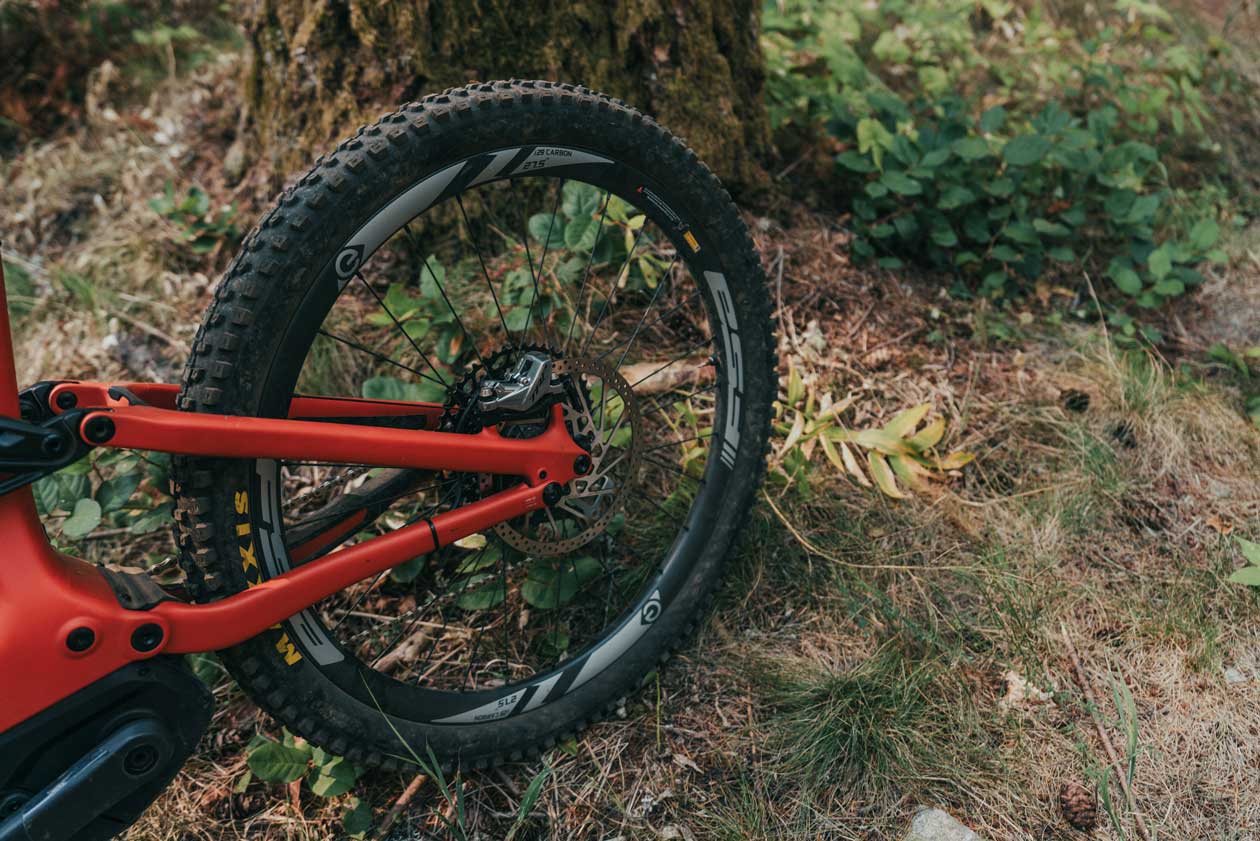
WHAT IS THE WARRANTY?
2 Years
WHO IS RIDING FSA MTB WHEELS?
Dan Wolf – Polygon, Alex Volokhov – Rocky Mountain, Andrew Taylor – Norco, Conor Macfarlane – Commencal, KHS Pro MTB, Sunn Enduro Team (EWS), Josh Wilson aka Daily MTB Rider to name a few.
WHAT IS SPECIFIC ABOUT EMTB WHEELS COMPARED TO OTHER WHEELS IN THE LINE UP?
Our eMTB wheels have a steel axle which increases internal strength drastically. Because eMTB bikes are ridden harder we needed to increase longevity and strength, the axle freehub were great places to start. Our eMTB’s are the complete wheel system featuring 4mm Asymmetrical offset, WideR Rim Shape, 28H hubs and spokes, Hookless Carbon Rim Profile, 29mm inner width rim complete with a 30mm depth rim. The FSA eMTB wheels are a great option to lighten up your eMTB or increase the stiffness of your bike. These wheels went through the highest level of testing to ensure their durability and we are very proud to announce them to the world!
TELL US ABOUT FSA’S WHEEL FACTORY.
FSA is one of the only companies manufacturing nearly everything on our wheels. For this reason, we built our own carbon wheel factory in Taichung, Taiwan. FSA’s wheel factory features state of the art equipment and testing and also boasts the ability to design, implement, and test our own products in controlled settings within our own factory.
WHAT GOES INTO WHEEL DEVELOPMENT?
We do all of carbon layup by hand, and test and re-test until we are ready for rider feedback. The wheels are then test ridden internally and then given to athletes for further feedback before hitting production. Our last round of wheels are athlete tested in Whistler on EWS courses from years past by some of our fastest athletes.
HOW LONG DOES DEVELOPMENT TAKE?
Generally, about a year to two years.
ANY FUTURE PLANS FOR THE WHEEL LINE?
We are working on new rim widths for eMTB and MTB. Also, we are offering our eMTB wheels as singles moving forward so we can accommodate the growing mullet rider needs.
DO YOU SELL RIM ONLY?
We do sell carbon rim only in 28H and 32H spoke counts. These can be used for Enduro or eMTB application.
CAN WE GET COLORED WHEEL STICKERS?
Yes! FSA offers stickers in Red, Blue, Green, Black and Oil Slick.
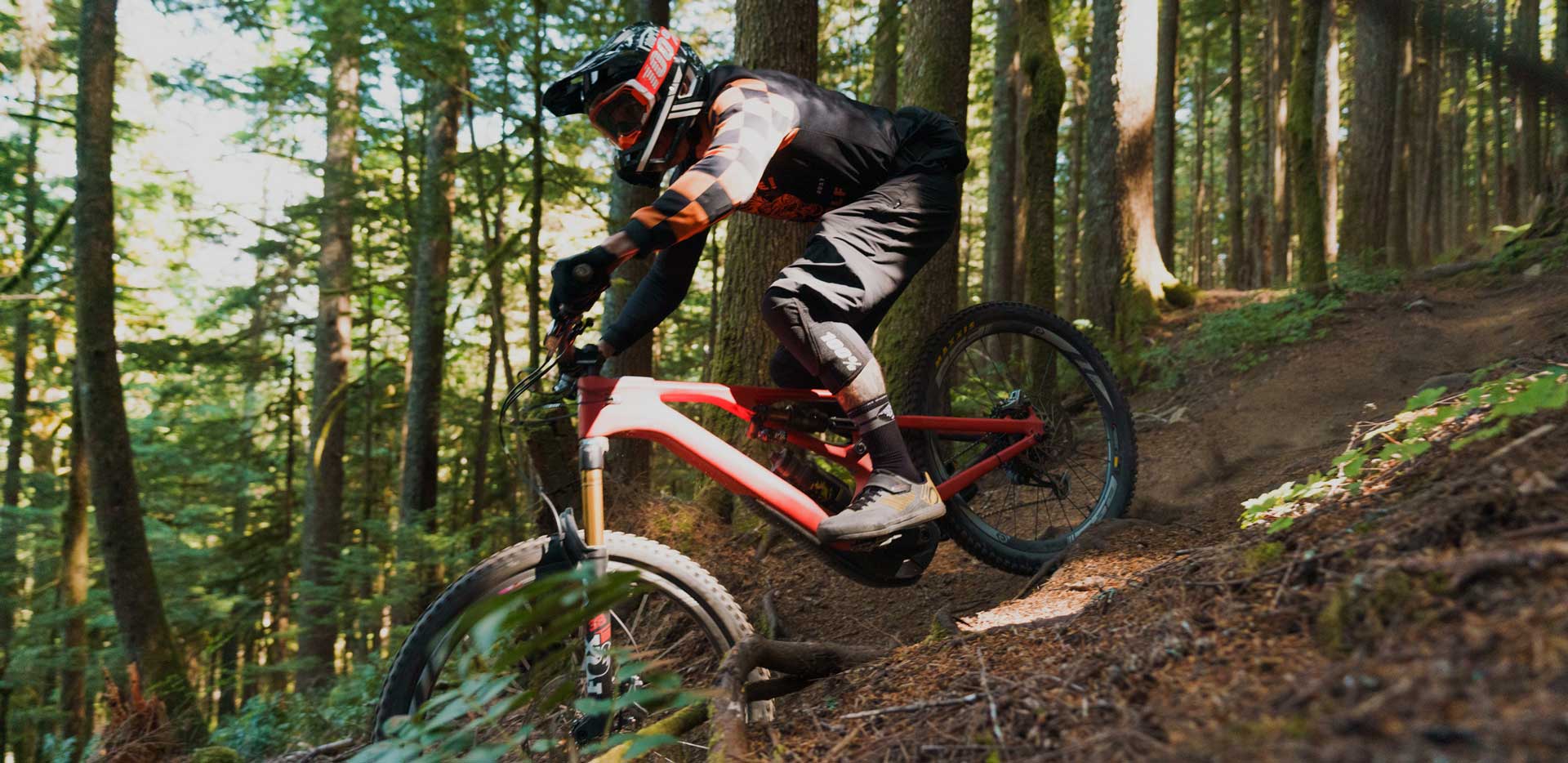
THE WOLF’S FIRST IMPRESSION
As you would expect from a high-end wheelset, the FSA eMTB Carbon i29’s mounted up without fuss to our Specialized Levo test mule. The hookless bead proved to produce no issues with getting our Maxxis tires to pop into place first try with a tubeless inflator, the brake rotors and cassette threaded on without an issue, and the axles on the Levo slid in with a reassuringly tight tolerance.
On the bike, the standout feeling was just how solid the FSA wheelset feels. Whether that be when laying down the power in Turbo mode or slashing a knob-ripping corner, there’s not even a hint of vagueness or wallowing that can plague some less sturdy hoops. We’ve been putting the hurt on our set for the last few months, physically trying to get them to show some signs of weakness, but haven’t had to give them the slightest bit of love with a spoke key since the initial re-tension after the initial 50 mile bed in period, which was minimal. It appears the hand built wheels FSA are pushing out are ready to rock. The spokes have tight and the wheels arrow-straight the whole time, and the rims have laughed off the punishment of square edged rocks and roots. We reckon these are in it for the long haul.
Some riders we’ve encountered while out riding on FSA wheels haven’t loved the bearing preload system for super extreme type demands, however we’ve not had any qualms or issues with them yet. For us the experience has been set and forget, so far. Speaking of bearings they seem to be holding up quite well and the freehub/driver body are also doing well. We’ve removed and reinstalled the cassette a number of times to check for gouging, wear, and just increase the wear and tear on the product without any negative results yet. One thing we’re not huge fans of however are the graphics, they are a bit reminiscent of the mid-teens (2014-2018) when wheel decals seemed to cover the entire rim with logos and graphics. We’d like to see something a bit stealthier as an option. Rim stickers aside, we’ve been quite pleased so far and think FSA have done a good job of creating a stiff-riding wheelset that will hold up.
